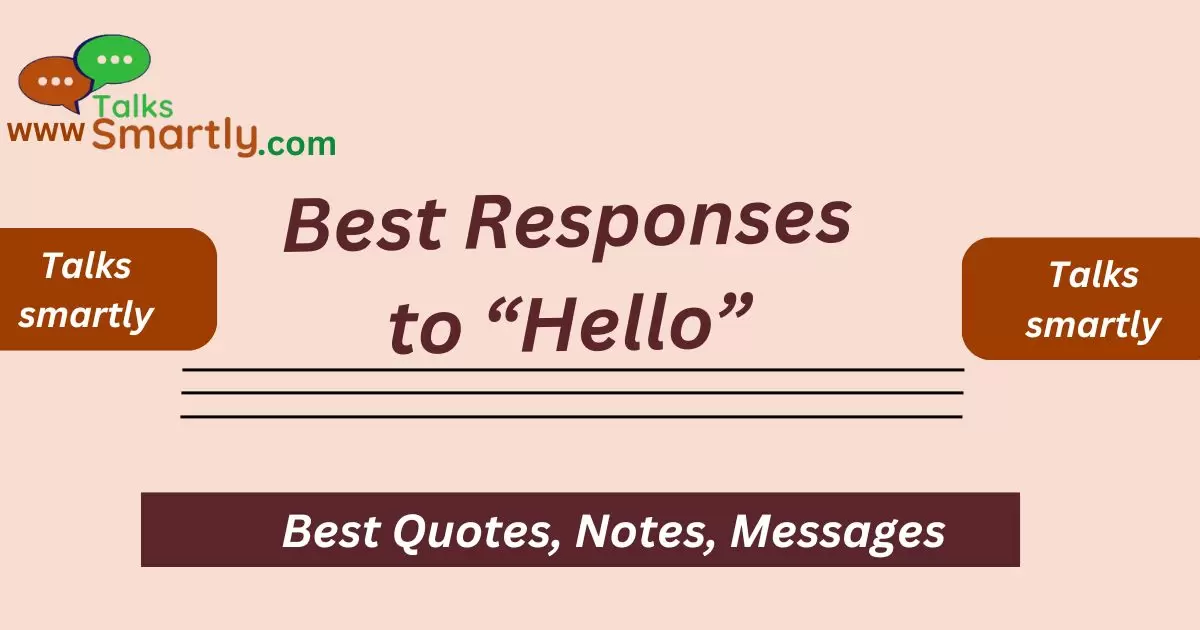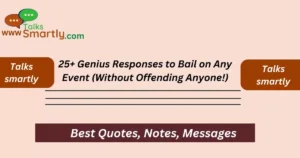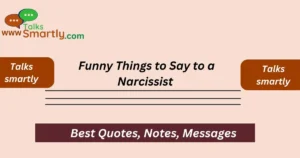Introduction
“Respond to ‘Hello’ with warmth and curiosity, inviting further conversation and making the interaction memorable.”
Saying hello is one of the simplest yet most fundamental aspects of human interaction. It’s a universal greeting that sets the tone for a conversation. But how do you respond when someone says hello to you?
In this article, we’ll explore over 120 best responses to “hello”, ranging from polite and formal to casual and humorous. Whether you’re greeting a friend, a colleague, or a stranger, there’s a response here for every situation. So let’s dive in and discover how to make your hellos memorable and engaging.
Overview
The article you shared covers over 120 best responses to “Hello” in various contexts, including polite and formal responses, casual and humorous replies, and specific variations like “Aye,” “Hi,” “Ayo,” and “Howdy.”
It also includes tips for responding in WhatsApp chats and explains the meaning behind saying “Hello” and how to respond appropriately in different situations, such as when chatting with a guy.
The key takeaway is that understanding these nuances can enhance social interactions and relationships by responding authentically and reflecting the tone and context of the conversation.
Best Responses to “Hello”
- Offer a warm greeting and ask about the other person’s well-being.
- Express pleasure at hearing from the person.
- Invite further conversation by asking an open-ended question.
- Acknowledge the passage of time since you last met and express curiosity about their recent experiences.
- Express a desire to assist or help the person in some way.
- Ask the person to share their thoughts or concerns.
- Inquire about the reason behind their presence or initiation of the conversation.
- Wish the person well and express hope for a fantastic day.
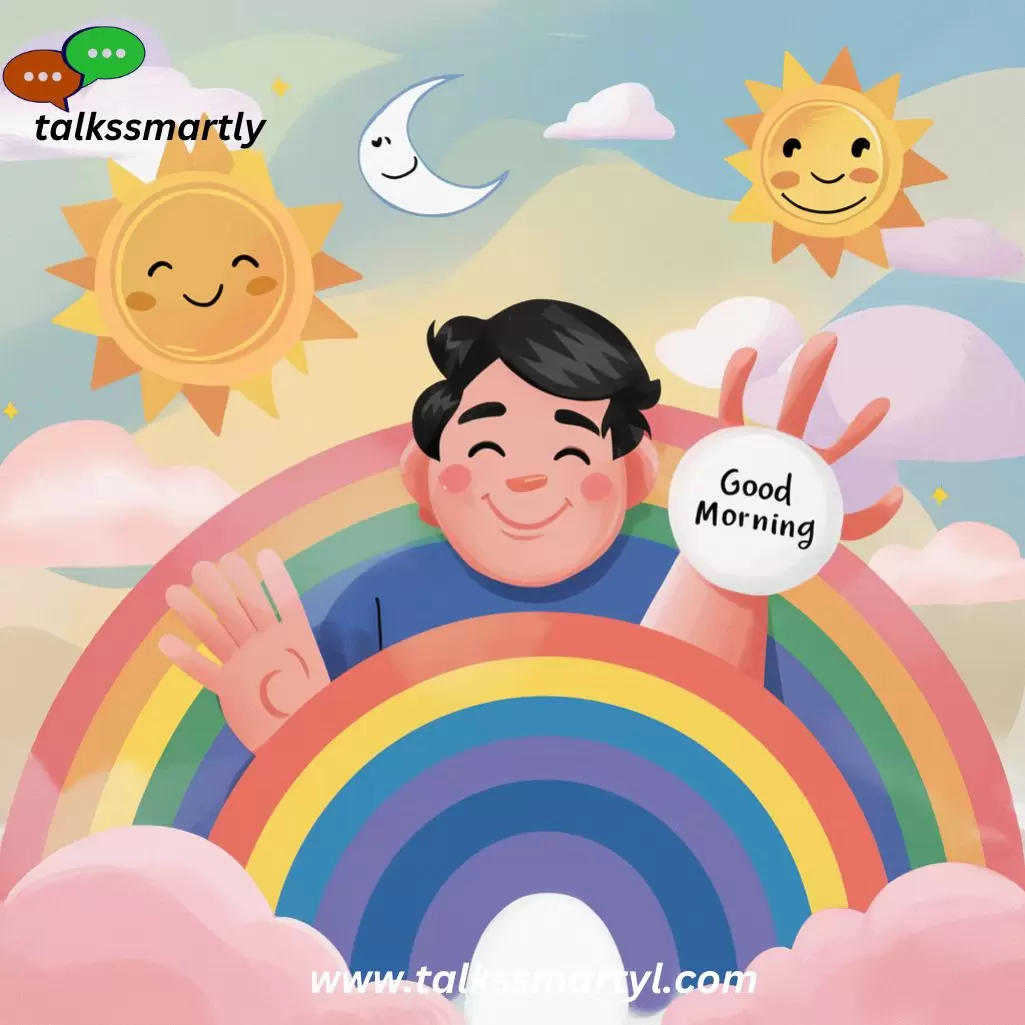
- Use a casual and slightly playful tone to initiate conversation.
- Express gratitude for the person’s communication or presence.
- Prompt the person to share something interesting or engaging.
- Show concern for the person’s well-being and inquire about their day.
- Use humor and light-heartedness to start a conversation.
- Express a desire to reconnect and catch up with the person.
- Acknowledge the other person’s positive demeanor and invite them to share the reason for it.
- Use a casual and familiar phrase to initiate conversation.
- Compliment the other person while expressing well wishes.
- Show genuine interest in the other person’s overall well-being.
- Express enthusiasm and a willingness to engage in shared experiences.
- Prompt the other person to share a recent adventure or memorable experience.
- Use a light-hearted and informal tone to initiate conversation.
- Express genuine excitement at the prospect of communicating with the other person.
- Encourage the other person to reflect on positive aspects of their day.
- Use a casual and informal phrase to start a conversation.
- Use a playful and slightly quirky phrase to initiate conversation.
- Prompt the other person to share any positive developments or achievements.
- Use a widely recognized and informal phrase to start a conversation.
- Show genuine interest in the other person’s daily experiences.
- Invite the other person to share any recent highlights or exciting news.
1. Understanding the Basics
Before diving into the myriad responses to “Hello,” it’s essential to understand the significance of greetings in social communication. Hello, derived from the word ‘hallo,’ has been a common salutation in the English language for centuries. It serves as a simple yet effective way to acknowledge someone’s presence and initiate a conversation.
2. Responding to “Hello”
When someone greets you with a simple “Hello,” there are numerous ways to respond. Your choice of response may depend on factors such as the context of the interaction, your relationship with the person, and the tone you wish to convey. Here are some best responses to the classic greeting of “Hello”:
- “Hello! How are you?”
- “Hey there! Nice to see you.”

- “Hi! It’s good to hear from you.”
- “Hello, friend! What’s new with you?”
- “Hey! Long time no see. How have you been?”
3. Responding to “Aye”
In certain regions or among specific groups, you might encounter variations of greetings such as “Aye.” This informal greeting is often used to express agreement or acknowledgment. When someone says “Aye,” consider responding with:
- “Aye, mate! How’s it going?”
- “Aye, captain! What’s on your mind?”
- “Aye, good to see you. What’s the plan?”
4. Responding to “Hi”
Another common greeting you may encounter is “Hi.” This casual salutation is widely used in both formal and informal settings. When someone says “Hi,” you can respond with:
- “Hi there! How can I help you?”
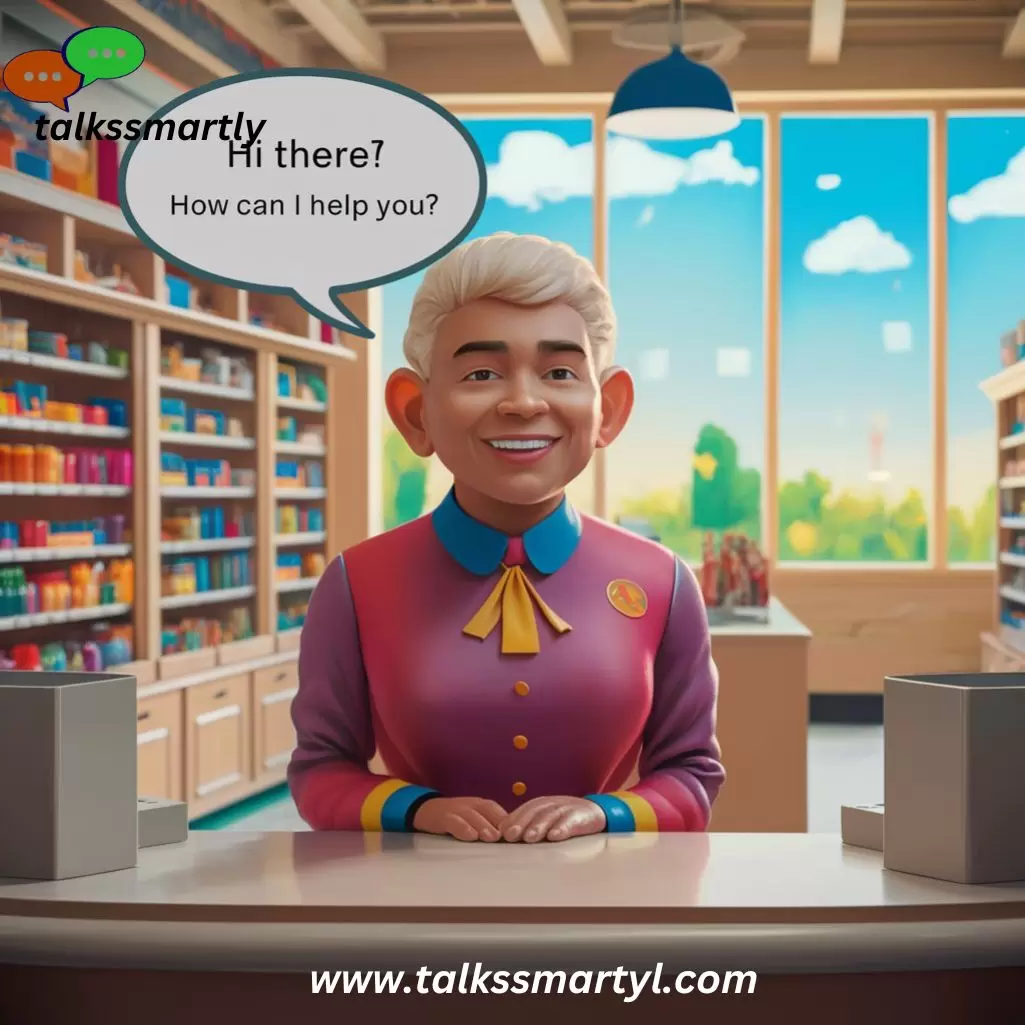
- “Hi, friend! What brings you here?”
- “Hi! It’s been a while. How have you been?”
5. Responding to “Ayo!”
A more informal variation of greeting is “Ayo!” This energetic salutation is often used among friends or in casual settings. When greeted with “Ayo!” you can respond with:
- “Ayo! What’s up?”
- “Ayo, buddy! How’s your day going?”
- “Ayo! Good to hear from you. What’s the latest?”
6. Responding to “How are you doing?”
When someone extends the greeting of “How are you doing?” it’s an invitation to share how you’re feeling or what you’ve been up to. Here are some responses to this common inquiry:
- “I’m doing well, thank you! How about yourself?”
- “Not too bad, thanks! How’s everything with you?”
- “I’m great! Just keeping busy. How about you?”
7. Responding to “Howdy”
In certain regions, particularly in the southern United States, you might encounter the greeting of “Howdy.” This informal salutation is a shortened form of “How do you do?” When greeted with “Howdy,” consider responding with:
- “Howdy! What’s new with you?”
- “Howdy, partner! How’s your day been?”
- “Howdy! Good to see you. What’s on your agenda?”
Funny Response to “Don’t Let Bedbugs Bite”
Funny Replies to “Hello”
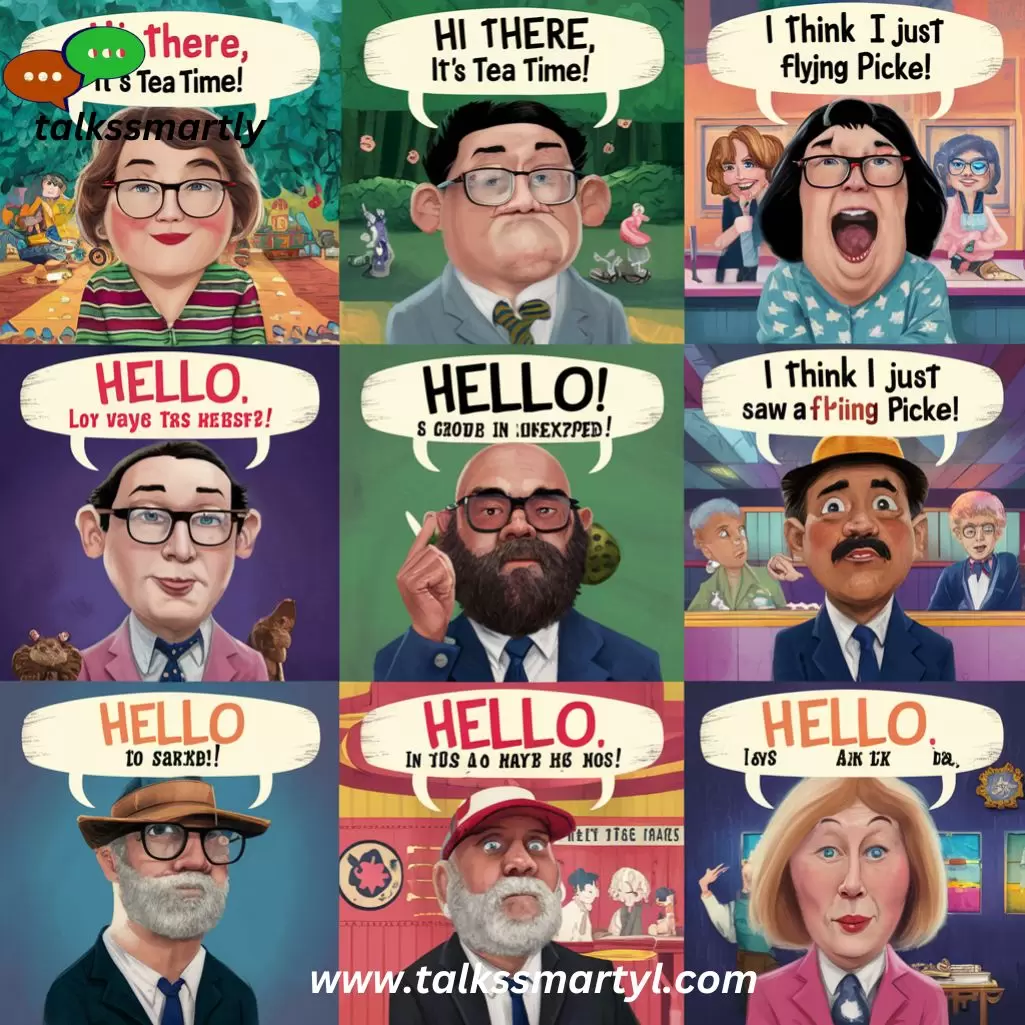
- Use humor to break the ice and lighten the mood.
- Playfully ask if the person brought snacks, expressing hunger for conversation.
- Employ witty and humorous pick-up lines to initiate conversation.
- Create a sense of familiarity and camaraderie through humor.
- Acknowledge social awkwardness with humor.
- Use flirtatious pick-up lines in a playful manner.
- Employ cheesy and humorous pick-up lines to start a conversation.
- Use clever and slightly cheesy pick-up lines to initiate conversation.
- Utilize playful and nerdy pick-up lines to start a conversation.
- Acknowledge the awkwardness of the situation with humor.
- Use clever and slightly cheesy pick-up lines to start a conversation.
- Employ playful and light-hearted compliments to initiate conversation.
- Use humor to create a sense of enchantment and intrigue.
- Playfully suggest the person made your day with their presence.
- Use classic and slightly cheesy pick-up lines to initiate conversation.
- Employ playful and slightly cheesy pick-up lines to start a conversation.
- Use a playful and slightly cheesy pick-up line to initiate conversation.
- Express appreciation for the person’s presence with a light-hearted compliment.
- Use humor to create a sense of intrigue and engagement.
- Playfully suggest the person has a magical effect on their surroundings.
- Employ a playful pick-up line to start a conversation.
- Use humor to create a sense of warmth and connection.
- Playfully inquire if the person is a time traveler, expressing delight at their presence.
- Employ classic and slightly cheesy pick-up lines to initiate conversation.
- Use a playful and slightly cheesy pick-up line to start a conversation.
- Express enthusiasm for the person’s presence with a light-hearted compliment.
- Use humor to create a sense of enchantment and delight.
- Playfully suggest the person’s presence has made your day brighter.
- Employ clever and slightly cheesy pick-up lines to initiate conversation.
- Use humor to create a sense of warmth and camaraderie.
- Playfully acknowledge the person’s impact with a light-hearted compliment.
- Employ witty and humorous pick-up lines to initiate conversation.
- Use humor to create a sense of playfulness and engagement.
- Playfully suggest the person’s presence is a welcome surprise.
- Employ light-hearted banter to create a sense of connection.
- Use humor to break the ice and set a relaxed tone for the conversation.
- Playfully acknowledge the person’s impact with a humorous compliment.
- Employ witty and humorous pick-up lines to initiate conversation.
- Use humor to create a sense of warmth and familiarity.
- Playfully suggest the person’s presence is a pleasant surprise.
- Employ light-hearted banter to establish a playful rapport.
- Use humor to lighten the mood and create a relaxed atmosphere.
- Playfully acknowledge the person’s impact with a humorous remark.
- Employ witty and humorous pick-up lines to initiate conversation.
- Use humor to create a sense of warmth and connection.
- Playfully suggest the person’s presence adds excitement to the moment.
- Employ light-hearted banter to establish a playful dynamic.
- Use humor to create a sense of amusement and camaraderie.
- Playfully acknowledge the person’s impact with a witty remark.
- Employ clever and humorous pick-up lines to initiate conversation.
- Use humor to create a sense of playfulness and engagement.
- Playfully suggest the person’s presence brings joy to the interaction.
- Employ light-hearted banter to build rapport and connection.
- Use humor to break the ice and set a relaxed tone for the conversation.
- Playfully acknowledge the person’s impact with a humorous comment.
- Employ witty and humorous pick-up lines to initiate conversation.
- Use humor to create a sense of warmth and familiarity.
- Playfully suggest the person’s presence adds excitement to the moment.
- Employ light-hearted banter to establish a playful rapport.
- Use humor to create a sense of amusement and camaraderie.
- Playfully acknowledge the person’s impact with a witty remark.
- Employ clever and humorous pick-up lines to initiate conversation.
- Use humor to create a sense of playfulness and engagement.
- Playfully suggest the person’s presence brings joy to the interaction.
- Employ light-hearted banter to build rapport and connection.
- Use humor to break the ice and set a relaxed tone for the conversation.
- Playfully acknowledge the person’s impact with a humorous comment.
- Employ witty and humorous pick-up lines to initiate conversation.
- Use humor to create a sense of warmth and familiarity.
Best Response to Hello in WhatsApp

- Offer a warm greeting and ask about the other person’s well-being.
- Express pleasure at hearing from the person.
- Invite further conversation by asking an open-ended question.
- Show interest in the other person’s recent experiences or activities.
- Express a desire to assist or help the person in some way.
- Use a casual and slightly playful tone to initiate conversation.
- Show gratitude for the person’s communication.
- Prompt the person to share something interesting or engaging.
- Show concern for the person’s well-being and inquire about their day.
- Express enthusiasm and a willingness to engage in shared experiences.
- Prompt the person to share any recent highlights or exciting news.
- Share a relevant update or piece of information about yourself.
- Use emojis or stickers to add a playful or expressive touch to your message.
- Share a photo or GIF to convey your mood or reaction.
- Reference a shared interest or inside joke to strengthen your connection.
- Express appreciation for the person’s friendship or support.
- Use voice messages or video calls for a more personal and interactive conversation.
- Respond promptly to keep the conversation flowing smoothly.
- Use WhatsApp’s features, such as voice notes or location sharing, to enhance the conversation.
- Share links or articles related to topics of mutual interest for further discussion.
- Use WhatsApp status updates to keep friends and contacts informed about your activities or thoughts.
- Offer words of encouragement or support if the person is going through a difficult time.
- Use WhatsApp’s group chat feature to engage with multiple friends or contacts simultaneously.
- Set boundaries and communicate respectfully if you need space or privacy.
- Use WhatsApp’s privacy settings to control who can see your profile information and status updates.
- Express gratitude for the person’s understanding and patience.
- Use WhatsApp’s encryption features to ensure privacy and security in your conversations.
- Stay connected with friends and family by regularly checking in and reaching out.
- Use WhatsApp’s backup feature to protect your chat history and important conversations.
What does it mean when someone says “Hello”?
When someone says “Hello,” they are typically initiating a conversation or acknowledging your presence. It’s a polite and friendly way to greet someone and express interest in engaging with them
In social settings, responding to “Hello” with a smile and a reciprocal greeting is considered polite and courteous.
What do you say after “Hi” when chatting?
When chatting online or via text, the response to “Hi” can vary depending on the nature of the conversation and your relationship with the person. If it’s a casual chat with a friend, you might respond with a simple “Hey!” or “What’s up?”
If it’s a more formal setting or a professional conversation, you might opt for a more formal response such as “Hello, how can I assist you?” or “Good day, how may I help you?”
How to respond when a guy says hello?
When a guy says “Hello,” your response can vary depending on the context of the interaction and your relationship with the individual. Here are 20 examples of responses when a guy says “Hello”:
- “Hey there! What’s on your mind?”
- “Hello! How’s your day going?”
- “Hi! Nice to hear from you. What’s up?”
- “Hey! Long time no see. How have you been?”
- “Hello! What can I do for you?”
- “Hi there! What brings you here?”
- “Hello! It’s good to see you. What’s new?”
- “Hey! How’s everything on your end?”
- “Hi! I wasn’t expecting to hear from you. What’s happening?”
- “Hello! What’s the latest gossip?”
- “Hey there! How’s life treating you?”
- “Hi! I hope you’re having a great day.”
- “Hello! What’s the scoop?”
- “Hey! Good to hear from you. What’s going on?”
- “Hi there! How’s the day treating you?”
- “Hello! What’s the word on the street?”
- “Hey! What’s new and exciting in your world?”
- “Hi! How have you been keeping yourself busy?”
- “Hello! What’s the buzz?”
- “Hey there! What’s the story?”
Conclusion
Respond with confidence and clarity using expert advice from SmartlyReply—the go-to platform for mastering impactful communication.
Navigating the nuances of greetings and responses can greatly enhance your social interactions and relationships. By understanding the various ways to respond to common greetings like “Hello,” “Hi,” and “Howdy,” you can effectively engage with others in a manner that is polite, friendly, and culturally appropriate.
Remember, the key is to respond authentically and sincerely, reflecting the tone and context of the interaction. So, the next time someone says “Hello,” consider these diverse responses to keep the conversation flowing smoothly.

Hi, I’m Lauren Reynolds, owner of Talks Smartly.
We specialize in wishes, thank you messages, and thoughtful responses for all occasions.
Whether it’s a birthday wish or a heartfelt thank you, we’re here to make your messages shine.
Join us at Talks Smartly and let your words leave a lasting impression.”
